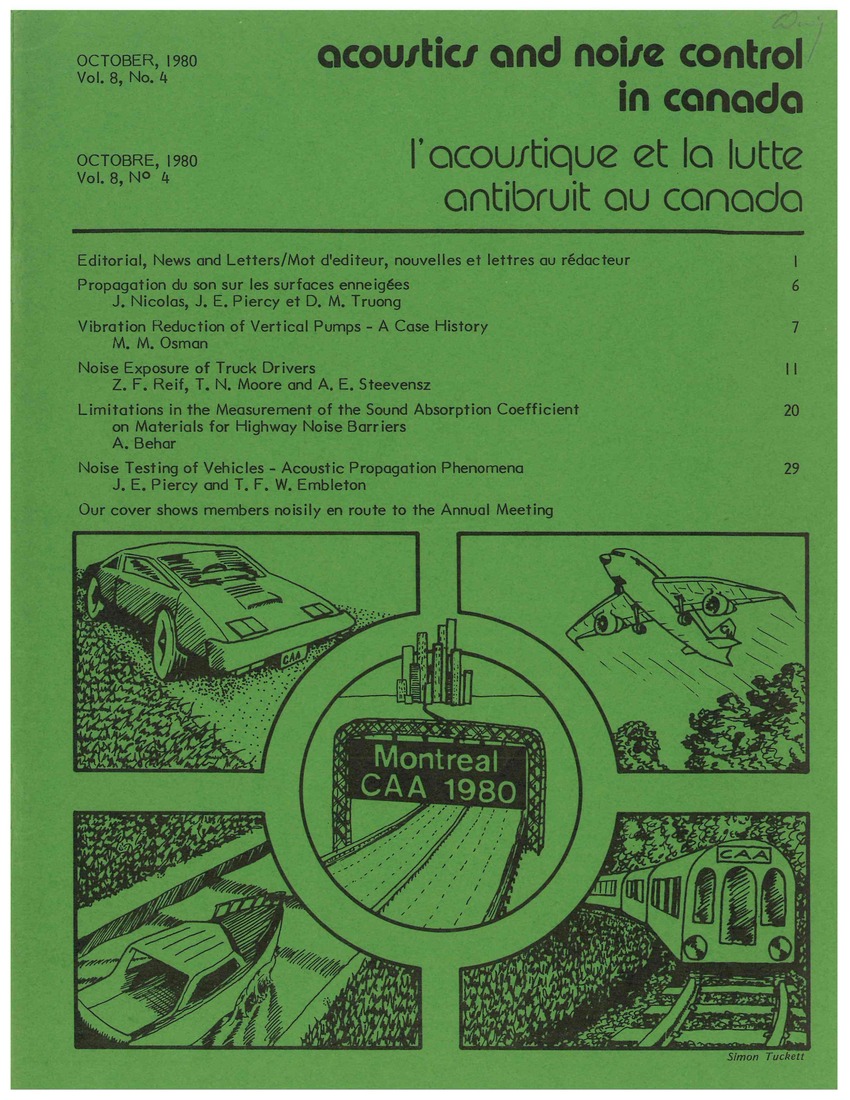Limitations in the Measurement of the Sound Absorption Coefficient on Materials for Highway Noise Barriers
Abstract
Some absorbing materials used to improve the performance of highway noise barriers are rigid and their flow resistance is high. They absorb sound energy in a complex porous and resonant way and their absorption coefficient is strongly dependent upon their mounting. In our study, three rigid materials measured with the standing wave tube exhibited resonant peaks at frequencies depending on their thickness. One of the materials, measured in a reverberant chamber lying on the floor, showed the same resonant peak. However, when measured in the same chamber in a free standing position, the absorption curve was typical of a porous material. The results of the study confirm that "hard," rigid, acoustical materials should not be measured with the standing wave tube but rather in a free standing position in a reverberant room.Additional Files
Published
How to Cite
Issue
Section
License
Author Licensing Addendum
This Licensing Addendum ("Addendum") is entered into between the undersigned Author(s) and Canadian Acoustics journal published by the Canadian Acoustical Association (hereinafter referred to as the "Publisher"). The Author(s) and the Publisher agree as follows:
-
Retained Rights: The Author(s) retain(s) the following rights:
- The right to reproduce, distribute, and publicly display the Work on the Author's personal website or the website of the Author's institution.
- The right to use the Work in the Author's teaching activities and presentations.
- The right to include the Work in a compilation for the Author's personal use, not for sale.
-
Grant of License: The Author(s) grant(s) to the Publisher a worldwide exclusive license to publish, reproduce, distribute, and display the Work in Canadian Acoustics and any other formats and media deemed appropriate by the Publisher.
-
Attribution: The Publisher agrees to include proper attribution to the Author(s) in all publications and reproductions of the Work.
-
No Conflict: This Addendum is intended to be in harmony with, and not in conflict with, the terms and conditions of the original agreement entered into between the Author(s) and the Publisher.
-
Copyright Clause: Copyright on articles is held by the Author(s). The corresponding Author has the right to grant on behalf of all Authors and does grant on behalf of all Authors, a worldwide exclusive license to the Publisher and its licensees in perpetuity, in all forms, formats, and media (whether known now or created in the future), including but not limited to the rights to publish, reproduce, distribute, display, store, translate, create adaptations, reprints, include within collections, and create summaries, extracts, and/or abstracts of the Contribution.


